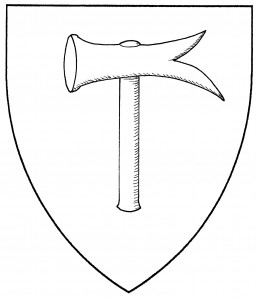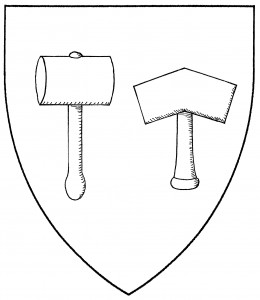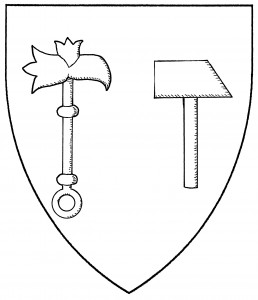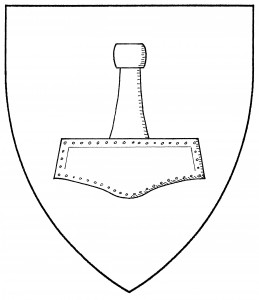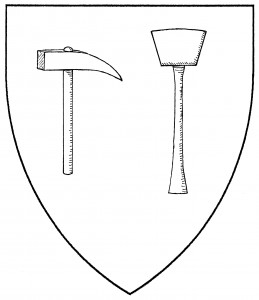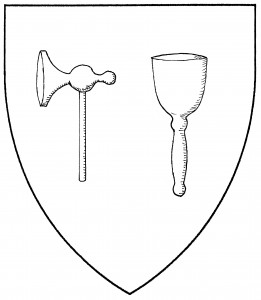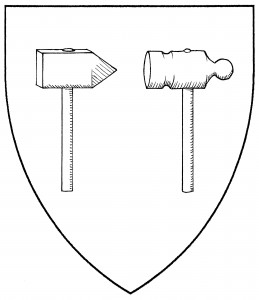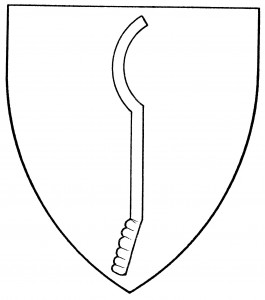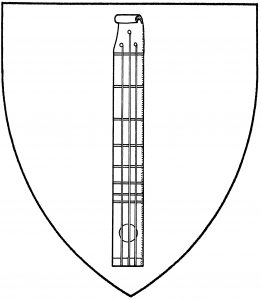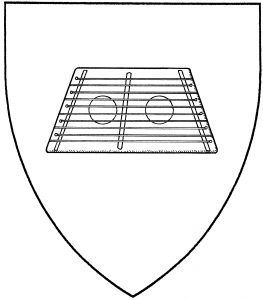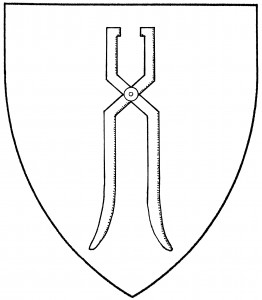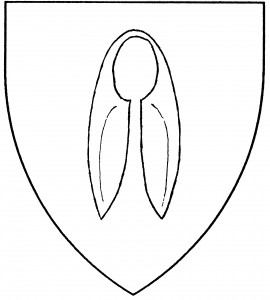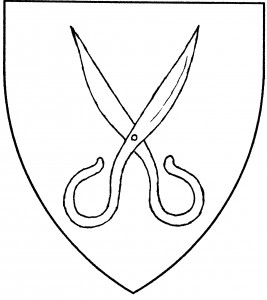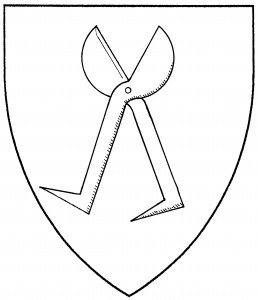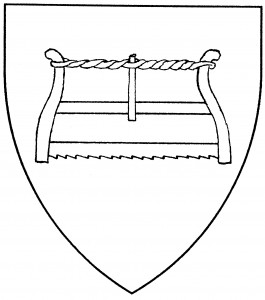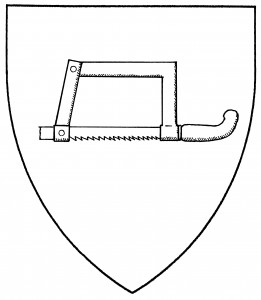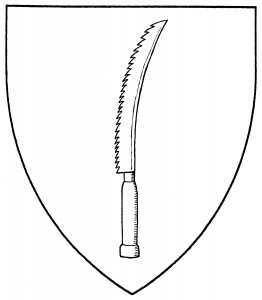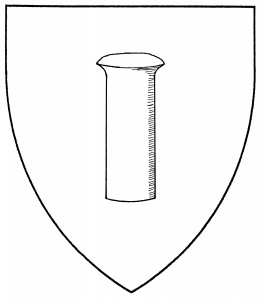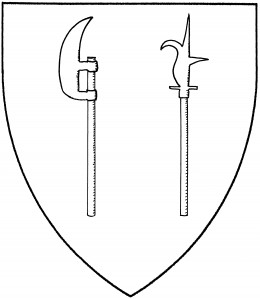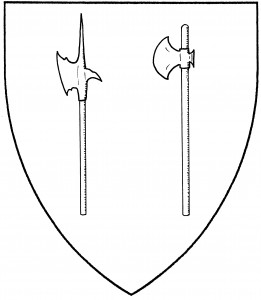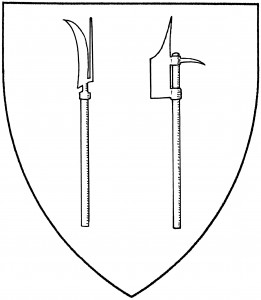A hammer is a tool for striking or pounding, consisting of a blunt heavy head mounted on a handle. It’s found in the canting arms of Martel as early as 1275 [Asp2 220]. The hammer’s default orientation is palewise, head to chief, with the main striking surface facing dexter. Its “proper” tinctures are with a black metal head and a brown wooden handle.
As regarding types of hammers, there seems to be no default form of hammer in medieval armory, and certainly not in Society armory. Probably no other charge has engendered such confusion of types and terms. One type of hammer has been variously blazoned a “sledge hammer”, a “smith’s hammer”, and a “stone hammer”; the term “war hammer” has been applied to three very different types. Indeed, the unmodified term “hammer” might be emblazoned as any form of hammer; the exact variant thus counts for no heraldic difference. Except for the mallet and the Thor’s hammer, the illustrations should be considered representative samples rather than definitions.
Medievally, the most common form of hammer was drawn with claws or spikes opposite the striking face, and a handle not overlong; the illustration is taken from the arms of Martel, c.1370 [Gelre 48v]. This form is also blazoned a “martel” for canting purposes; though it’s usually assumed to be a weapon, the clawed form is also found in the arms of the Worshipful Company of Blacksmiths, 1490 [Bromley & Child 22].
Another common form of hammer in period was the “mallet”, a craftsman’s tool rather than a weapon, found in the canting arms of Mailly as early as c.1275 [ANA2 483]. The mallet’s form might vary by country or century, but was predominantly depicted in one of two basic forms, as in the illustration.
Also in period we find the “war-hammer”, definitely intended as a weapon: it had a clawed striking face for breaking through armor. It’s found in the arms of Tusser, 1559 [Bedingfeld 50], though some modern blazons mistake it for a battle-axe. The Society has also used the term “war-hammer” for other charges, far less documentable to period.
Of the variant forms unique to Society armory, the most common is the “Thor’s hammer” or “mjolnir”, a token of the Norse thunder god. It alone among the hammers has its haft to chief by default. The illustration is a composite of Viking age mjolnir-pendants, from finds at Birka, Rømrsdal, and Skåne.
Society armory also gives us examples of the “armorer’s hammer”; the “bung-starter”, a long-handled bludger for breaking open a barrel of beer; the “chasing hammer”, used by jewelers; the “carver’s mallet”, used by woodcarvers; the “smith’s hammer”, sometimes called a “cross peen hammer”; the “ball peen hammer”; the “sledgehammer”; and the “stone (throwing) hammer”. Of these, the stone throwing hammer has not been documented to period, either as an artifact or as a charge; pending such documentation, the stone throwing hammer has been disallowed for Society use.
For related charges, see pick. See also mace, pole-arm.
Raymond of Stratford bears: Gules, a hammer bendwise argent.
Marteau de Forgeron bears: Quarterly gules and Or, a warhammer bendwise sable.
Lughaid Eamon MacDiarmid bears: Or chaussé ployé vert, a smith’s hammer sable.
Sandor Hackbrett bears: Argent, two hammers in saltire vert.
Falan Bitor bears: Per chevron argent and gules, three mallets counterchanged.
Amartine du Bon Coeur bears: Per saltire argent and azure, four ball-peen hammers in cross, handles to center counterchanged.
Ragnar the Bold bears: Quarterly sable and Or, a Thor’s hammer argent within a bordure counterchanged.
Laeghaire O Laverty bears as a badge: A carver’s mallet bendwise sinister sable.
William of Woodland bears as a badge: Gules goutty d’Or, a wooden bung-starter palewise proper.
